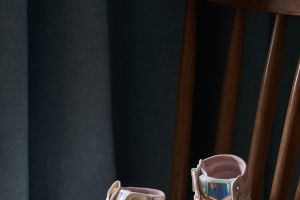There are times when danger comes unawares, and to provide emergency treatment in the event of family health and safety, every family should prepare a medical kit.
List of essential items for first aid at home
1. Alcohol cotton: used to disinfect hands or tools such as pliers before first aid.
2. Gloves and mask: can prevent the rescuer from being infected.
3.0.9% saline: used to clean the wound, it is best to choose a small independent package or a medium-sized bottle.
It should be noted that the leftover after opening should be thrown away and not put into the first aid kit again.
If not, use unopened distilled water or mineral water instead.
4. Sterile gauze: used to cover the wound. It is not as likely as cotton to leave the cotton wool on the wound, and will not pull the wound when removed.
5. bandage: bandage with elasticity, used to wrap the wound, does not hinder blood circulation.
6. Triangular towel: also called triangular bandage, with a variety of uses, can support the injured upper limbs, fixed dressings or fractures, etc.
7. round-headed scissors, and pliers: round-headed scissors are safer and can be used to cut open the tape or bandage.
If necessary, can also be used to cut open clothing.
Pliers can be clamped to remove dirt from the wound, etc.
8. Flashlight: in the dark environment rescue, it can be used to illuminate, but also for the fainting person to do pupil reaction.
9. Cotton swab: used to clean the small area of bleeding wounds.
10. Ice bag: placed on the bruises, muscle strains, or joint sprains, so that microvascular constriction, can help reduce swelling.
Nosebleed, the ice pack placed on the forehead of the injured person, can help stop the bleeding.
11. Safety buckle pin: fixed triangle towel or bandage.
12. Adhesive tape: Paper tape can fix gauze, which is suitable for general use because it does not irritate the skin.
Zinc oxide tape can be fixed bandaged.
13. Band-Aid: used when covering small wounds.
14. Cling paper: Use it will not cling to the wound to wrap the burned and scalded parts before sending it to the hospital.
15. Bagged mask or artificial respiration mask: when administering artificial respiration to prevent infection.
16. All kinds of drugs: including but not limited to fever medicine, anti-inflammatory drugs, painkillers, etc.
17. Auxiliary tools: iodine, skimmed cotton balls, sterile bandages, small scissors, tweezers, medical tape, thermometer, etc.
These items are not expensive, purchase them as needed and store them at home, when an accident comes, you can avoid many risks.


